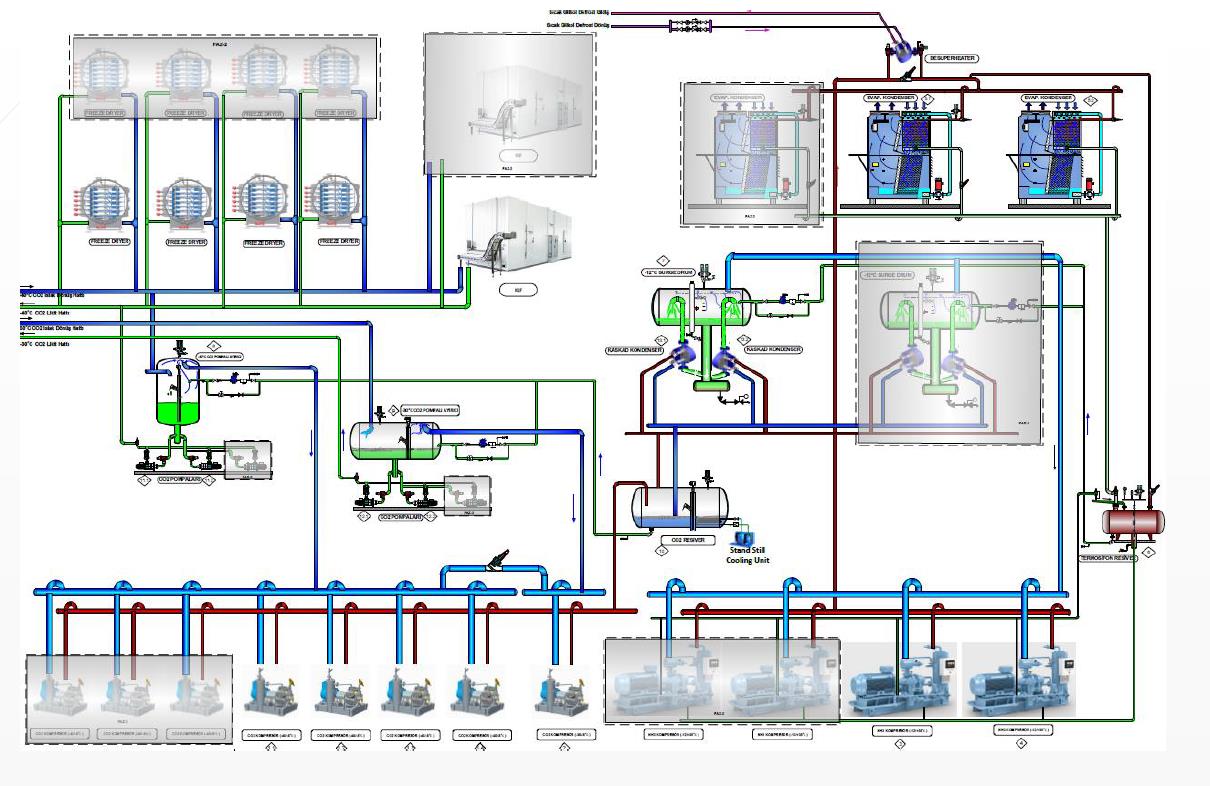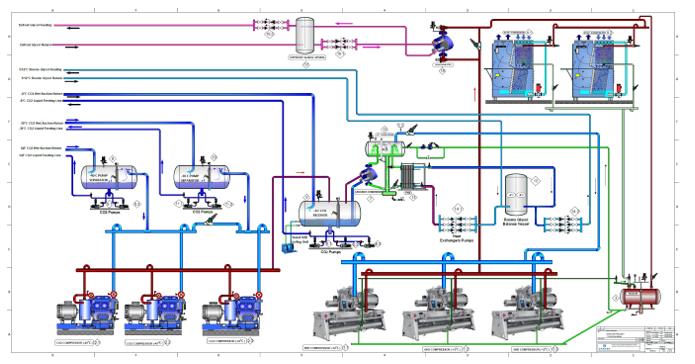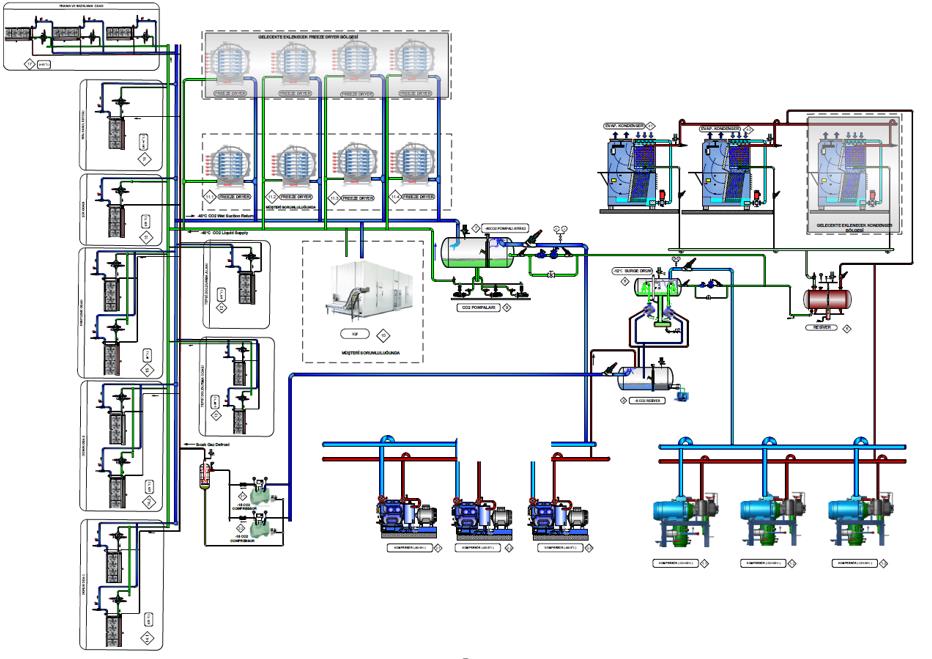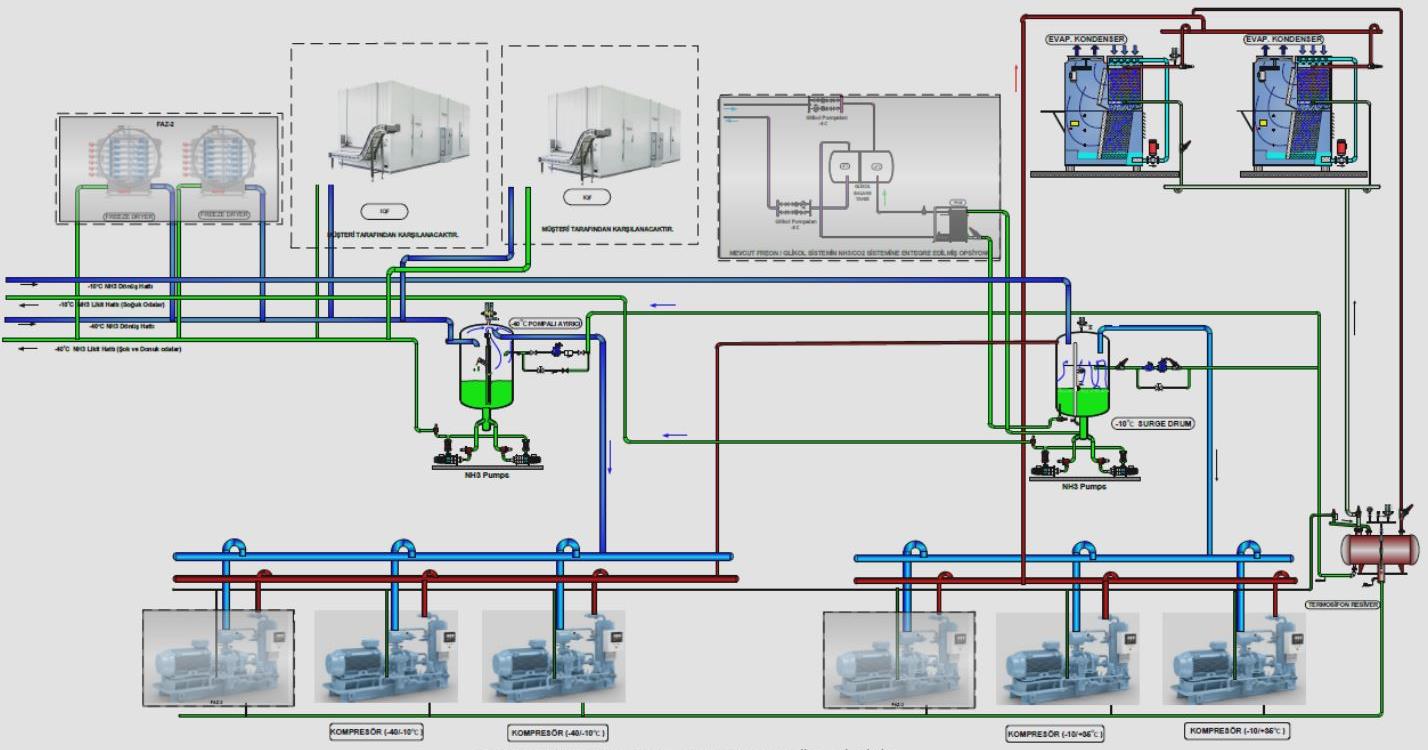We call them “natural refrigerants” because they are substances that occur directly in nature. The most commonly used ones are ammonia (NH3), carbon dioxide (CO2) and hydrocarbons (propane or isobutane). These substances were used as refrigerants until the 1930s before fluorinated gases (f-gases) became more common in refrigeration systems. Fluorine is a halogen and today we know that these halogenated gases increase the greenhouse effect.
Why use natural refrigerants?
We strongly believe that refrigeration systems with natural refrigerants are predestined to meet the growing global demand for cooling and air-conditioning. Why are we so sure? Because they are sustainable in two ways.
- They are climate-neutral
Did you know that natural refrigerants, such as ammonia, carbon dioxide, propane and isobutane, make no or only a small contribution to global warming (Global Warming Potential, or GWP for short = 0 to about 5.5), compared with the fluorinated refrigerants commonly available on the market?
- They are cost-effective
Did you know that natural refrigerants are inexpensive to produce, have long-term availability and enable efficient operation of refrigeration and air-conditioning systems? So this means they offer you investment security.
Critics claim that systems with natural refrigerants are more complex to build and far too expensive overall - prejudices that we are happy to refute. After all, anyone who takes a holistic view and considers all system costs, from installation and operation through to disposal, will come to the conclusion that refrigeration systems with natural refrigerants have the lowest lifetime costs.
-NH3/CO2/Glycol Flow Diagram


-NH3/CO2 Flow Diagram

-NH3 Flow Diagram

 Contact via WhatsApp
Contact via WhatsApp
